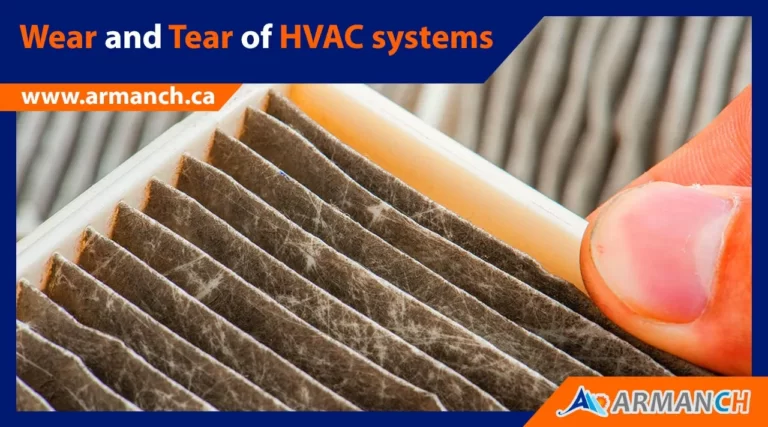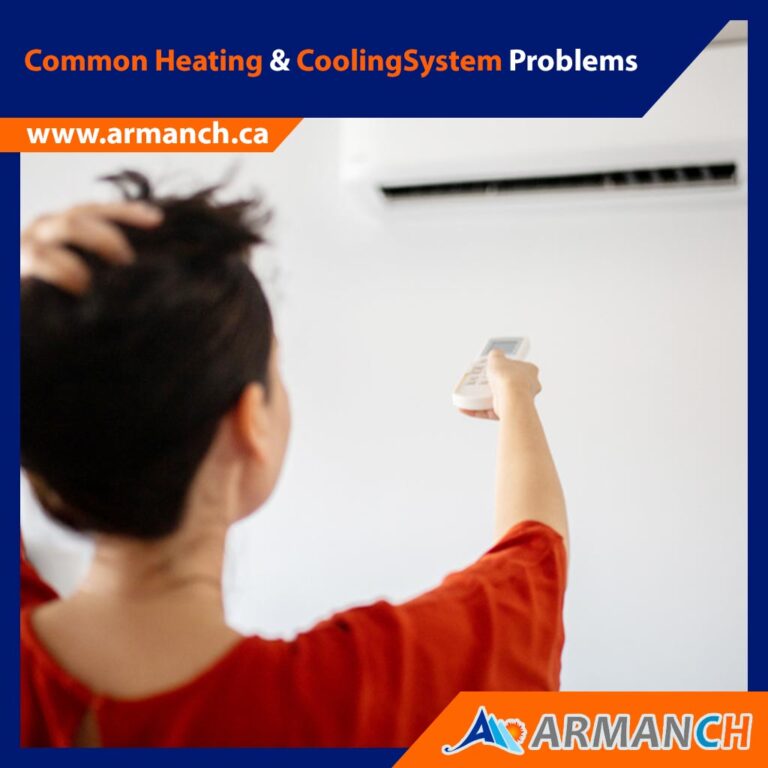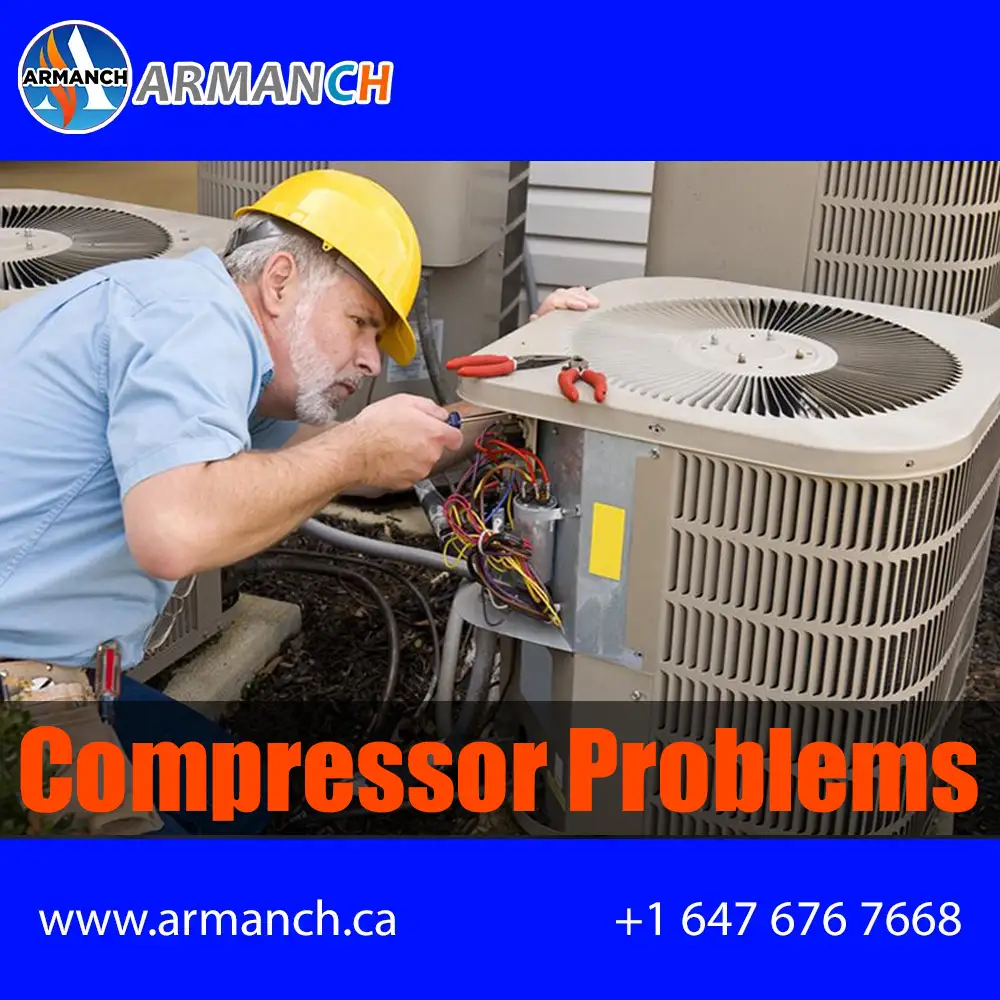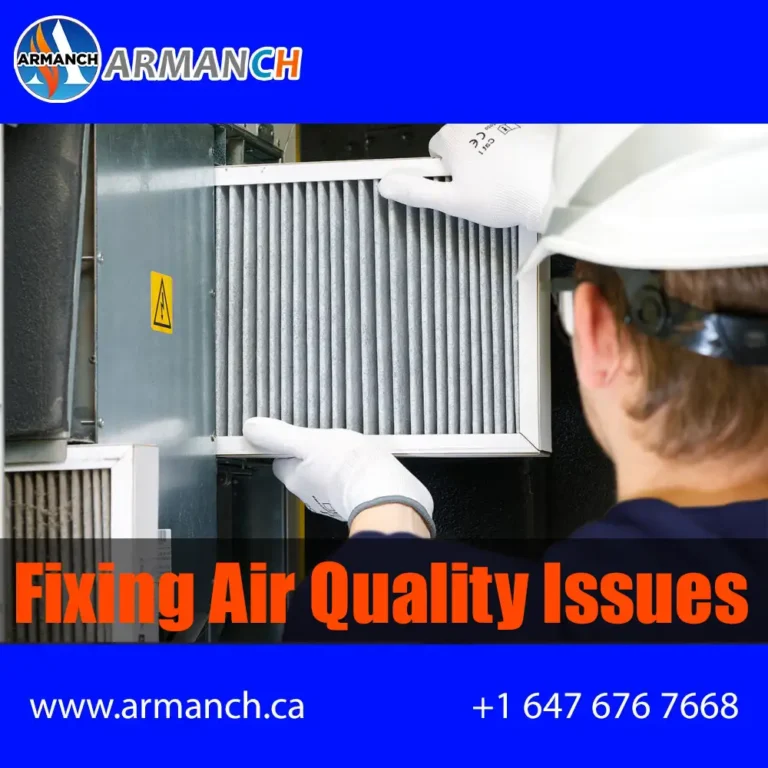
Regularly scheduled maintenance by a licensed service contractor is essential to ensure the smooth operation of your HVAC-R system. By neglecting maintenance, you risk encountering common furnace problems that could have been easily avoided.
Symptoms: The system may not work efficiently or may not work at all.
Causes: Dirty and clogged filters.
Solutions: Change the filters regularly following the manufacturer’s instructions.

Your thermostat plays a crucial role in the performance of your HVAC-R system. Issues with the thermostat or its settings can lead to inefficiencies or a complete breakdown of your heating and cooling setup.
Symptoms: The system may not turn on or off when it should, or it may struggle to maintain a consistent temperature.
Causes: Incorrect thermostat settings or a malfunctioning thermostat.
Solutions: Verify thermostat settings and replace it if malfunctioning.
Numerous mechanical components keep your heating system running smoothly. Normal wear and tear on these components can impact your unit’s efficiency over time.
Symptoms: Unusual noises or decreased efficiency.
Causes: Worn-out or damaged components.
Solutions: Schedule regular inspections and repairs by a qualified technician.

When your HVAC-R system produces unusual noises, it could indicate issues with the blower or faulty mechanical/electrical parts.
Symptoms: System malfunctions or intermittent shutdowns.
Causes: Overloaded or faulty fuses/breakers.
Solutions: Replace fuses or breakers; if issues persist, consult a qualified technician.
Routine maintenance is vital for your air conditioner’s performance. Dirt and debris can accumulate on the coils, reducing efficiency and potentially causing premature wear.
Symptoms: Inefficient cooling or heating, or system failure.
Causes: Dirty and clogged coils.
Solutions: Schedule professional cleaning of the coils.
The most common reason the furnace trips a circuit breaker is that the blower is overworking.
If something is blocking airflow to your system, your blower has to work harder to compensate.
The most common cause is a dirty air filter.
When the air filter is dirty, your blower has to work harder to force air through the filter.

A continuously running blower may be due to a stuck fan switch or a malfunctioning blower motor.
Symptoms: The blower runs even when the system is not in use.
Causes: Stuck fan switch or a malfunctioning blower motor.
Solutions: Check and adjust the fan switch; if issues persist, consider replacing the blower motor.
Leaking drain pipes can lead to water issues around your HVAC-R unit, potentially causing damage.
Symptoms: Water dripping or pooling around the unit.
Causes: Clogged or cracked drain lines, or an overflowing condensate pan.
Solutions: Clean or repair drain lines and regularly empty the condensate pan.

Common in HVAC-R systems, ignition problems may result from various factors, such as a dirty pilot light, a faulty flame sensor, or a malfunctioning gas valve.
Symptoms: System failure to ignite or short cycling.
Causes: Outage in the pilot light, dirty flame sensor, or malfunctioning burners.
Solutions: Schedule a qualified technician for inspection and repairs.
The compressor is critical for refrigerant circulation, and problems can arise from overheating, electrical issues, or general wear and tear.
Symptoms: System failure.
Causes: Malfunctioning compressor.
Solutions: Arrange for compressor repair or replacement by a qualified technician.
Refrigerant leaks can significantly reduce system efficiency or even lead to complete failure. Prompt inspection and repair are crucial.
Symptoms: Loss of efficiency or system failure.
Causes: Refrigerant leakage.
Solutions: Consult a qualified technician for inspection and repairs.
Dirty filters can impede airflow, leading to decreased efficiency and increased energy consumption.
Regular replacement is key to maintaining optimal performance.
Ignition problems can result from several causes. A dirty pilot, flame sensor, or burners can cause a pilot outage, short cycling, furnace lockout, or delayed ignition of the burners.
Symptoms: Reduced airflow, decreased efficiency, increased energy consumption.
Causes: Clogged filters with dirt, dust, or debris.
Solutions: Change filters regularly following the manufacturer’s guidelines.

Electrical issues can disrupt your HVAC-R system, stemming from loose wiring, faulty fuses, or power surges.
Symptoms: System malfunction or complete failure.
Causes: Electrical system problems.
Solutions: Engage a qualified electrician for a thorough inspection and necessary repairs.
For reliable HVAC-R services and solutions tailored to your needs, trust ARMANCH. Schedule routine maintenance or address issues promptly to ensure a comfortable and efficient indoor environment.
Insufficient airflow can lead to poor heating or cooling performance, making your system work harder than necessary.
Symptoms: Uneven heating or cooling, weak airflow from vents.
Causes: Blocked or dirty air ducts, clogged filters, or issues with the blower motor.
Solutions: Clean or replace filters, inspect and clean air ducts, and address blower motor problems promptly.

If some areas of your home are consistently too hot or too cold, it may indicate issues with your HVAC-R system’s distribution.
Symptoms: Temperature variations between rooms.
Causes: Poor insulation, ductwork issues, or an improperly sized HVAC system.
Solutions: Improve insulation, inspect and repair ductwork, and consult with a professional to assess and possibly resize your HVAC system.
Unexpectedly high energy bills can be a sign that your HVAC-R system is not operating efficiently.
Symptoms: Significant increase in energy consumption.
Causes: Inefficient system operation, aging equipment, or thermostat issues.
Solutions: Schedule regular maintenance, consider upgrading to a more energy-efficient system, and ensure your thermostat is functioning correctly.
Short cycling occurs when your HVAC-R system frequently turns on and off in short intervals, potentially causing wear and tear.
Symptoms: Rapid cycling, inconsistent temperatures.
Causes: Oversized HVAC system, dirty filters, or issues with the thermostat.
Solutions: Consult with a professional to assess if your system is appropriately sized, clean or replace filters, and address thermostat problems.
Frozen evaporator coils can lead to reduced cooling efficiency and potentially cause system breakdowns.
Symptoms: Reduced cooling, ice buildup on coils.
Causes: Insufficient airflow, low refrigerant levels, or issues with the evaporator coil.
Solutions: Improve airflow by replacing filters and cleaning coils, ensure proper refrigerant levels, and address any problems with the evaporator coil.

An overheating HVAC-R system can result in shutdowns, reduced efficiency, or even equipment damage.
Symptoms: System shutdowns, strange odors, or excessive heat.
Causes: Restricted airflow, dirty components, or issues with the system’s heat exchanger.
Solutions: Address airflow issues, schedule regular maintenance, and promptly repair any problems with the heat exchanger.
Poor indoor air quality can affect the health and comfort of occupants, often stemming from issues with your HVAC-R system.
Symptoms: Allergies, respiratory issues, or persistent odors.
Causes: Dirty filters, mold or bacteria growth, or issues with ventilation.
Solutions: Regularly change filters, schedule professional duct cleaning, and ensure proper ventilation to improve indoor air quality.
Upgrading to a smart thermostat can enhance energy efficiency, but compatibility issues may arise.
Symptoms: Incompatibility with your HVAC system.
Causes: Outdated HVAC equipment or incompatible wiring.
Solutions: Consult with a professional to assess compatibility, consider upgrading equipment if necessary, and ensure proper installation.
Our mission is to change people’s lives. We do that by working within our community to create a positive change.
ARMANCH 2024 CREATED BY Armanch Development Team